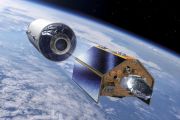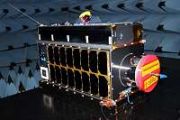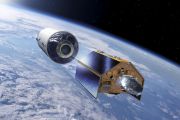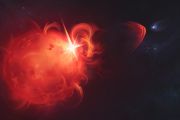
Copernical Team
ATLAS Integrates DoD antenna into Hybrid Space Architecture
 In a significant advancement for space communications technology, ATLAS Space Operations has successfully integrated a Department of Defense (DoD) antenna into its Freedom Software Platform, marking a milestone in operational hybrid network capabilities. This integration exemplifies the potential of Hybrid Space Architecture (HSA) to unite various networks, including the Department of Defense, C
In a significant advancement for space communications technology, ATLAS Space Operations has successfully integrated a Department of Defense (DoD) antenna into its Freedom Software Platform, marking a milestone in operational hybrid network capabilities. This integration exemplifies the potential of Hybrid Space Architecture (HSA) to unite various networks, including the Department of Defense, C Smuggled Starlink dishes throw lifeline to some in war-torn Sudan
 On a street corner in the Sudanese town of Tamboul, dozens of people tap feverishly on their phones, calling loved ones and moving money through online apps.
At the centre of their huddle is a bright white dish that connects to the internet via Starlink, the satellite system owned by Elon Musk's SpaceX rocket company.
Starlink has become a lifeline for some in a country where the interne
On a street corner in the Sudanese town of Tamboul, dozens of people tap feverishly on their phones, calling loved ones and moving money through online apps.
At the centre of their huddle is a bright white dish that connects to the internet via Starlink, the satellite system owned by Elon Musk's SpaceX rocket company.
Starlink has become a lifeline for some in a country where the interne NASA to send unmanned drone 2 miles high to study radiation during eclipse
 NASA researchers are planning to study changes in the sun's radiation during the solar eclipse via an unmanned aircraft on Monday.
The team of six researchers from NASA's Langley Research Center in Hampton, Va., will travel to Fort Drum, N.Y., to study the eclipse with a specially modified Alta X Uncrewed Aircraft System, NASA said in a release.
Researchers will attach weather se
NASA researchers are planning to study changes in the sun's radiation during the solar eclipse via an unmanned aircraft on Monday.
The team of six researchers from NASA's Langley Research Center in Hampton, Va., will travel to Fort Drum, N.Y., to study the eclipse with a specially modified Alta X Uncrewed Aircraft System, NASA said in a release.
Researchers will attach weather se DARPA awards Phase Four with contract for Very Low Earth Orbit Propulsion System
 In a significant advancement for satellite technology, Phase Four has been awarded a $14.9 million contract by the Defense Advanced Research Projects Agency (DARPA) to develop an air-breathing electric propulsion (EP) system, aiming to enhance satellite functionality in Very Low Earth Orbit (VLEO) at altitudes between 90-450km. This development marks a pivotal step in the DARPA's Otter program,
In a significant advancement for satellite technology, Phase Four has been awarded a $14.9 million contract by the Defense Advanced Research Projects Agency (DARPA) to develop an air-breathing electric propulsion (EP) system, aiming to enhance satellite functionality in Very Low Earth Orbit (VLEO) at altitudes between 90-450km. This development marks a pivotal step in the DARPA's Otter program, Sierra Space unveils Eclipse satellite buses: Velocity, Horizon, and Titan
 Sierra Space, a leader in the commercial space-tech and defense-tech industries, has launched its innovative Eclipse satellite bus line, marking a significant advancement in space systems technology. The new series, named Eclipse Velocity, Eclipse Horizon, and Eclipse Titan, are tailored to meet the diverse needs of modern space missions, setting a new benchmark in earth observation, satellite s
Sierra Space, a leader in the commercial space-tech and defense-tech industries, has launched its innovative Eclipse satellite bus line, marking a significant advancement in space systems technology. The new series, named Eclipse Velocity, Eclipse Horizon, and Eclipse Titan, are tailored to meet the diverse needs of modern space missions, setting a new benchmark in earth observation, satellite s Galaxies grow more chaotic over time
 A new study led by Professor Scott Croom of the ARC Centre of Excellence for All Sky Astrophysics in 3 Dimensions (ASTRO 3D) and the School of Physics has demonstrated that the age of a galaxy is the principal factor influencing its increasing disorganization over time, challenging previous beliefs that mass and environmental conditions were predominant influences.
This research, which met
A new study led by Professor Scott Croom of the ARC Centre of Excellence for All Sky Astrophysics in 3 Dimensions (ASTRO 3D) and the School of Physics has demonstrated that the age of a galaxy is the principal factor influencing its increasing disorganization over time, challenging previous beliefs that mass and environmental conditions were predominant influences.
This research, which met New observations challenge formation of brown dwarfs
 The enigmatic birth of stars and their less luminous counterparts, brown dwarfs, has long intrigued astronomers. Recently, an international research team led by Dr. Basmah Riaz from the University Observatory Munich used the Atacama Large Millimeter/submillimeter Array (ALMA) to observe an extremely young brown dwarf, Ser-emb 16. Their findings, which reveal novel structural complexities during
The enigmatic birth of stars and their less luminous counterparts, brown dwarfs, has long intrigued astronomers. Recently, an international research team led by Dr. Basmah Riaz from the University Observatory Munich used the Atacama Large Millimeter/submillimeter Array (ALMA) to observe an extremely young brown dwarf, Ser-emb 16. Their findings, which reveal novel structural complexities during Neutron Stars prove to be a crucial tool in quest to unravel dark matter
 In a new study, scientists at the University of Melbourne's ARC Centre of Excellence for Dark Matter Particle Physics have made significant advancements in understanding dark matter by studying neutron stars, potentially unlocking new methods to detect this elusive component of our universe.
Recent findings, detailed in The Journal of Cosmology and Astroparticle Physics, suggest that when
In a new study, scientists at the University of Melbourne's ARC Centre of Excellence for Dark Matter Particle Physics have made significant advancements in understanding dark matter by studying neutron stars, potentially unlocking new methods to detect this elusive component of our universe.
Recent findings, detailed in The Journal of Cosmology and Astroparticle Physics, suggest that when First 'glory' on hellish distant world
 Data from Cheops and its friends suggest that between the unbearable heat and light of exoplanet WASP-76b's sunlit face, and the endless night of its dark side, may be the first extrasolar 'glory'. The effect, similar to a rainbow, occurs when light is reflected off clouds made up of a perfectly uniform but so far unknown substance.
"There's a reason no glory has been seen before outside o
Data from Cheops and its friends suggest that between the unbearable heat and light of exoplanet WASP-76b's sunlit face, and the endless night of its dark side, may be the first extrasolar 'glory'. The effect, similar to a rainbow, occurs when light is reflected off clouds made up of a perfectly uniform but so far unknown substance.
"There's a reason no glory has been seen before outside o CHEOPS identifies phenomenal 'Glory' on distant exoplanet WASP-76b
 The CHEOPS space telescope, managed by the University of Geneva (UNIGE), has made a landmark observation of the exoplanet WASP-76b, revealing an atmospheric phenomenon akin to a "glory," akin to a rainbow, which could mark the first instance of such an event being identified outside our solar system. This discovery stems from a collaborative effort involving the European Space Agency (ESA) and t
The CHEOPS space telescope, managed by the University of Geneva (UNIGE), has made a landmark observation of the exoplanet WASP-76b, revealing an atmospheric phenomenon akin to a "glory," akin to a rainbow, which could mark the first instance of such an event being identified outside our solar system. This discovery stems from a collaborative effort involving the European Space Agency (ESA) and t 






























